Ossicular chain disruption (or ossicular discontinuity) is loss of normal alignment between the three middle ear ossicles. The condition is a cause of conductive hearing loss.
On this page:
Epidemiology
Exact incidence and prevalence are not known. Hearing loss associated with temporal bone fractures in children occurs in 75%, but persists beyond 1 month in less than 15%.
Clinical presentation
Sudden conductive hearing loss in traumatic cases. The hearing loss may be due to ossicular chain disruption or middle ear haemorrhage. Sensorineural hearing loss may coexist, e.g. in temporal bone fractures that have a transverse component.
Ancillary features include haemotympanum and/or otorrhoea.
Pathology
Ossicular discontinuity may be complete or partial 14
complete: with no contact between the disconnected ends, or
partial: normal contact at an ossicular joint or along a continuous bony segment of an ossicle is replaced by soft tissue or simply by contact of opposing bones.
Aetiology
-
traumatic
temporal bone fracture, especially longitudinal type
blast injuries
rare causes e.g. lightning strike 2
-
atraumatic
congenital
-
erosive disease
chronic middle ear infection
Location
The following types of ossicular chain disruption are listed by frequency 12:
-
most common
incudomalleolar joint separation
incudostapedial joint separation
-
less common
dislocation of the incus
dislocation of the malleoincudal complex
-
rare
stapedovestibular dislocation
ossicular fracture
ossicular dislocation is more common than the ossicular fracture. Incus is prone to displacement due to minimal ligament support. Long process of incus (due to lack of support), followed by the crura of stapes are the most common ossicular fractures. Fracture of the malleus (usually of the neck) is the least common ossicular fracture 13.
Radiographic features
CT
axial plane is the best view to access the continuity of the ossicular chain 13.
-
incudomalleolar joint separation
axial images: the normal ice cream cone appearance is disrupted such that the ice cream scoop (head of malleus) appears falling off the cone (body and short process of incus)
coronal images: broken heart sign
-
incudostapedial joint separation
long and lenticular process of incus are laterally displaced away from the head of the stapes
3D reconstructions are useful for surgical planning.
Treatment and prognosis
Conductive hearing loss of more than 30 dB persisting for six months post-injury is considered an indication for the reconstruction of the ossicular chain:
-
conservative:
hearing aids
-
surgical (acute or delayed):
relocation: reconstruction with a hydroxyapatite prosthesis and/or cartilage allograft



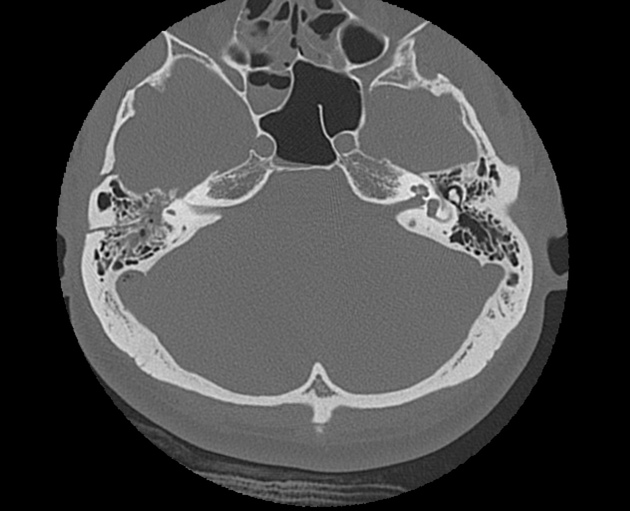
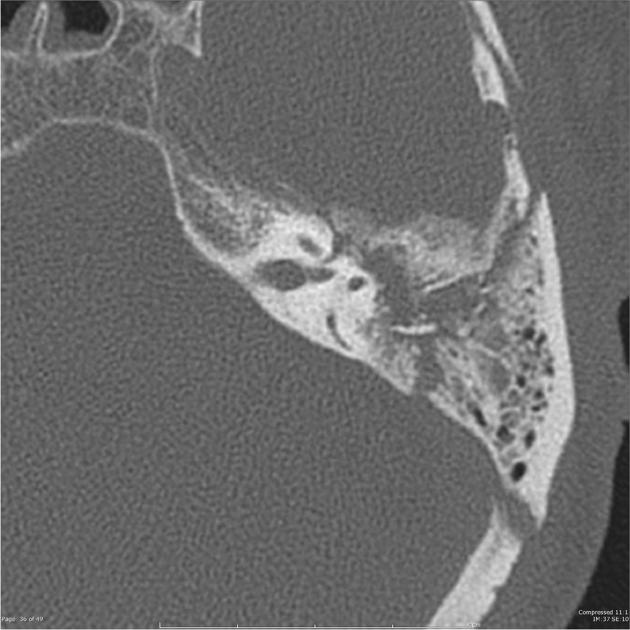
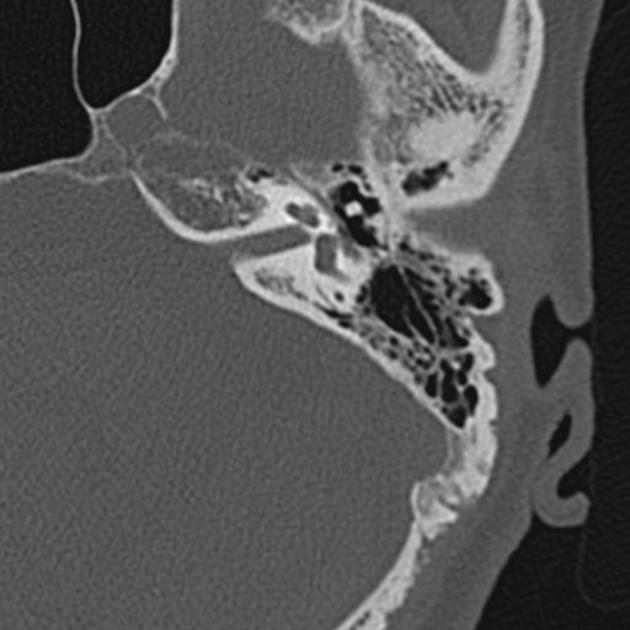
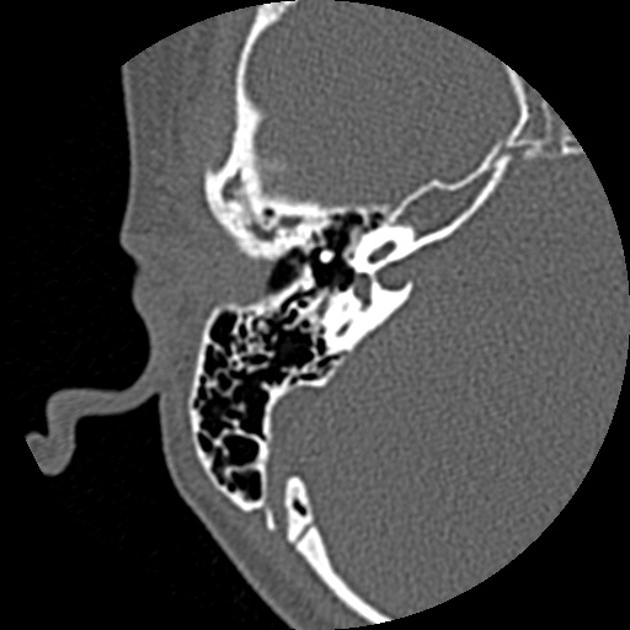
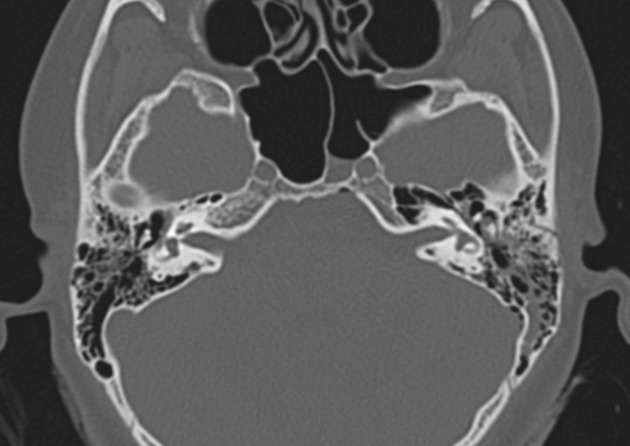
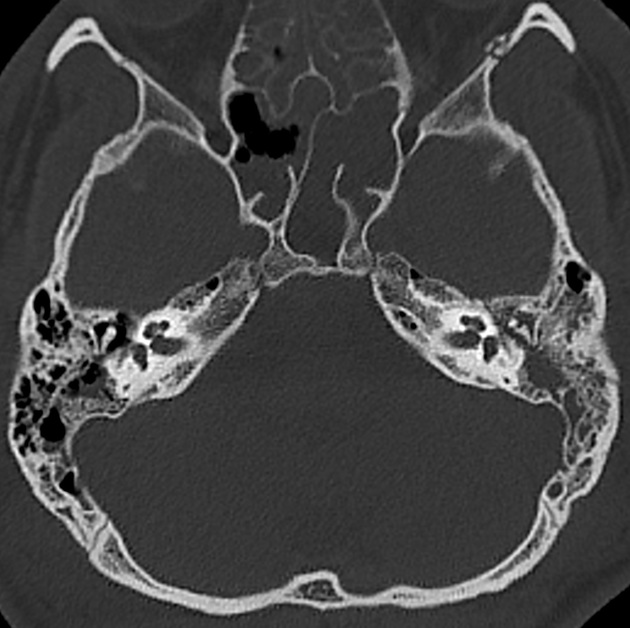
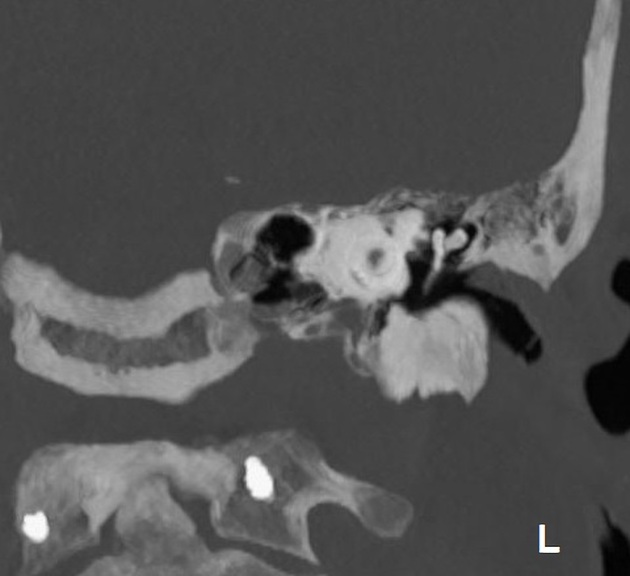


 Unable to process the form. Check for errors and try again.
Unable to process the form. Check for errors and try again.